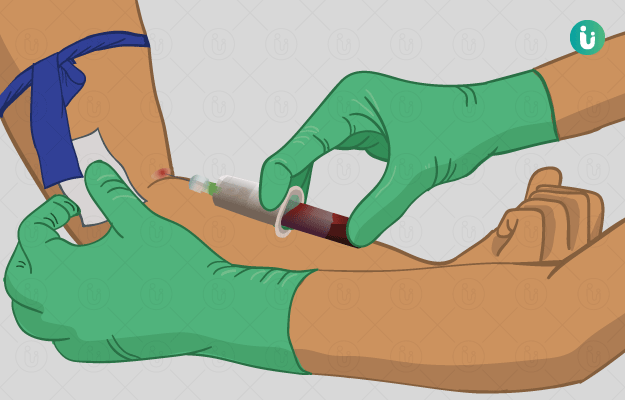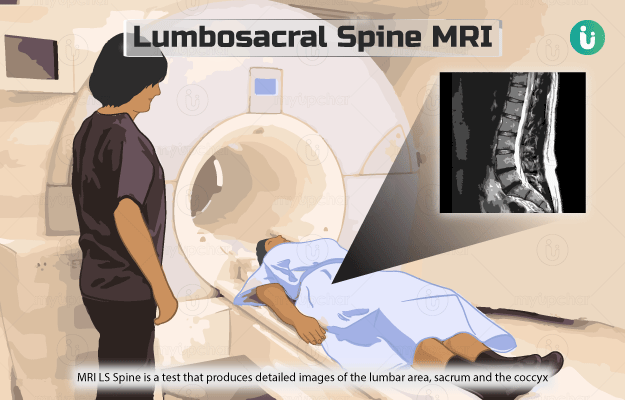What is Complete Haemogram with ESR and Peripheral Blood Smear?
A complete haemogram includes different tests such as complete blood count (CBC), erythrocyte sedimentation rate (ESR) and peripheral smear (P/S) as explained below:
- CBC: It is a group of tests that can provide information on the amount and types of cells in your blood. CBC includes the following tests:
- RBC count: RBCs are the oxygen-carrying cells in blood. They also transport carbon dioxide from the different parts of the body to the lungs. If your RBC count is high (polycythaemia), they may form a clump and block your blood vessels. This clump formation will also hinder the flow of more RBCs, keeping them from supplying oxygen to tissues. If you have a low RBCs count, your body will not be able to receive as much oxygen as it requires.
- WBC (leukocyte) count: WBCs are larger than the RBCs but lesser in number. They help in protecting your body against infections caused by bacteria, viruses or any other microorganisms. When a person is suffering from an infection, the number of WBCs rises rapidly. So, your WBC count can help determine if you have an infection. In cancer patients, WBC count also helps assess how the body is responding to the treatment.
- Differential leukocyte count (DLC): DLC test detects the different types of WBCS: neutrophils, eosinophils, basophils, monocytes and lymphocytes. It also detects the presence of immature neutrophils (band neutrophils). Every WBC has a specific function in the body. So, the number of each WBC provides information about a different function of your immune system. An increased or decreased number of each type of WBCs can provide information on an allergy, infection, conditions like leukaemia or toxic reactions to chemicals or drugs.
- Haemoglobin (Hgb): Haemoglobin is a protein that gives the RBCs their characteristic red colour. It is this protein that binds and carries oxygen. Hgb test is an excellent estimate to determine the amount of oxygen that the blood can carry to all the parts of the body.
- Haematocrit or packed cell volume: Haematocrit test tells you what percentage of your blood is comprised of RBCs. For example, if the packed cell volume is 40, it indicates that 40% of your blood is RBCs. Together, Hgb and HCT tests determine the presence of anaemia and polycythaemia.
- Platelet (thrombocyte) count: Platelets are the smallest blood cells. During an injury, they clump together to make blood clots and stop bleeding. If you have a low platelet count, your blood will not clot properly and you would experience excessive bleeding even with minor cuts. A high platelet count leads to spontaneous formation of blood clots inside blood vessels, blocking the flow of blood.
- Mean platelet volume (MPV): This test detects the average volume of platelets in your blood. However, even when your platelet count is normal, your MPV may be abnormal. So, this test is used along with platelet count to check for bleeding disorders.
- RBC indices: There are three types of RBC indices. These include the mean mean corpuscular volume (MCV), corpuscular haemoglobin (MCH), and mean corpuscular haemoglobin concentration (MCHC). MCV gives the size of your RBCs, MCH determines the amount of Hgb present in every RBC, while the MCHC tells about the concentration of Hgb present in every RBC. These help in determining the type of anaemia. Red cell distribution width (RDW) can help in analysing if the shapes and sizes of RBCs are the same or different.
- ESR: It is a blood test that checks how fast RBCs descend to the bottom of a test tube (form sediment), when an anticoagulant (chemical to prevent blood clotting) is added to a blood sample. If you have inflammation in your body, your RBCs will clump together, which makes them heavier and settle quickly. ESR is considered to be higher if the sedimentation rate is higher, and can provide information that active disease is present in the body.
- Peripheral blood smear: This is a blood test in which a laboratory scientist or doctor analyses the morphology (shape) and number of RBCs, WBCs and platelets in your blood. A smear can also be used to check for the presence of parasites in blood.






























